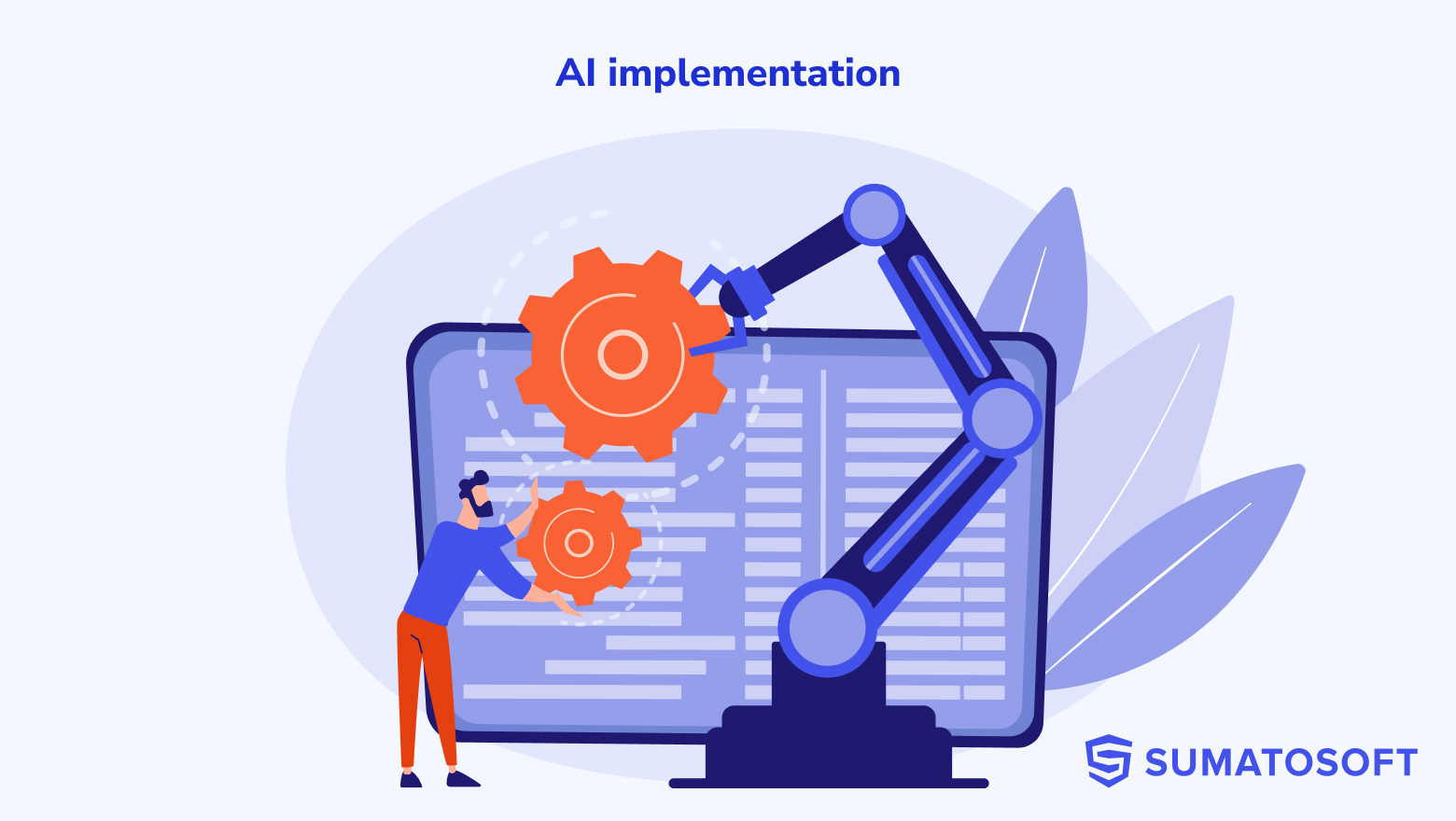Guideline: Delivering Projects on Time with Release Planning


Did you know that 20% of all businesses in the US fail within the first year?
The success of any project is dependent on the planning process. Whether you build an MVP for your startup or develop a huge enterprise application, you can drastically increase the chances for success if you spend time and money on business analysis activities and planning. The plan itself may seem like a simple task, but it is imperative that the plan be well thought out and executed. Furthermore, one must take into account the various factors which can affect the success of their project: deadlines, team members’ availability or lack thereof, priorities to name just a few.
In this article, we will be dealing with release planning, and specifically the Scrum system.
Introduction to Agile and Scrum
Agile development is a mindset, a set of values and principles designed to produce software that meets user needs in a collaborative and flexible manner. Stemming from a desire to break away from traditional, rigid software development methods, Agile focuses on collaboration, customer feedback, and quick iterations. The Agile Manifesto, formulated in 2001, outlines the core values and principles of this approach.
One of the most popular frameworks for implementing Agile is Scrum. Scrum organizes work into small, manageable pieces called Sprints, typically lasting two to four weeks. During these sprints, a cross-functional team works collaboratively to deliver a potentially shippable product increment.
Scrum is a framework for getting work done, where agile is a mindset.
Several key roles exist within Scrum:
- Product Owner: Represents the voice of the customer and defines product requirements.
- Scrum Master: Ensures the team adheres to Scrum values and practices and removes any impediments.
- Development Team: The professionals who carry out the work of delivering the product increment.
The process is iterative, with regular feedback loops, including daily stand-up meetings, sprint reviews, and retrospectives. These practices aim to keep the team aligned, adaptive to changes, and continuously improving.
At the heart of Scrum, and indeed all Agile methodologies, is the idea of continuous improvement and adaptability. While a plan sets the direction, the ability to adapt to changes, new information, and feedback is what makes Agile methodologies like Scrum so effective and valuable in today’s fast-paced world.
In the context of our discussion, release planning in Scrum is a pivotal activity, ensuring that the team has a clear vision of what needs to be achieved in the broader perspective, beyond just the immediate sprint. Let’s delve deeper into the intricacies of this planning process in the subsequent sections.
Understanding Planning in Scrum
Planning is fundamental to the world of Scrum. Given Scrum’s iterative nature, it’s essential to ensure that each iteration (or Sprint) is well-defined and has a clear purpose. This clarity comes from adequate planning.
The Importance of Planning
Every Scrum team seeks to deliver maximum value to its stakeholders. To achieve this, they must have a clear direction and understanding of what they aim to accomplish during each sprint. Planning provides this direction. It’s an opportunity for the team to come together, discuss priorities, and decide on the best course of action.
Furthermore, planning allows teams to:
- Anticipate challenges and create strategies to address them.
- Align on priorities and set realistic expectations with stakeholders.
- Foster team cohesion and mutual understanding.
Consequences of a Lack of Planning
Without proper planning, teams face several risks:
- Loss of Direction: Without a clear plan, it’s easy for teams to drift off course, leading to wasted effort and resources.
- Missed Deadlines: Without adequate foresight, teams may underestimate the time required for tasks, leading to missed commitments and eroded stakeholder trust.
- Reduced Quality: Rushing to deliver without a clear plan often compromises the quality of the product.
- Increased Costs: Mistakes made due to lack of foresight can be expensive to correct later.
To understand the depth of planning required in Scrum, we must distinguish between its various planning levels. The most immediate is the Sprint Planning, where the team decides what to work on in the upcoming sprint. The basis of planning and business and product goals is setting up during the Discovery phase. However, to set the direction for multiple sprints and align with broader product goals, we introduce the concept of Release Planning, which we’ll explore in detail next.
2 Stories WIth One Morale – Release Planning Matters
Company ThermoTriumph Techs (the Name Was Altered) – Positive Scenario:
A tech firm has developed an IoT-enabled smart thermostat. For their next release, they plan to add voice control integration and address a few bugs. Through thorough release planning:
- They prioritized the most popular virtual assistants.
- Allocated specialized developers for voice integration.
- Set a clear timeline with an anticipated release date.
This structured approach ensured a smooth and efficient release that was well-received by users.
Company QuickChill Catastrophes LLC. (the Name Was Altered) – Negative Scenario:
Another company ventured into the IoT space with a smart refrigerator. They wanted to introduce a feature where the fridge suggests recipes based on its contents. Without proper release planning:
- They didn’t account for the variety of global cuisines and user preferences.
- There was a lack of testing on how the fridge’s sensors identified different food items.
- They rushed the feature release to coincide with a major sales event.
Post-release, users reported numerous inaccuracies. Some received recipe suggestions for ingredients they didn’t have, while others got recommendations that didn’t align with their dietary preferences. The lack of release planning led to negative user feedback and tarnished the product’s reputation.
Types of Planning in Scrum
In the Scrum framework, planning is not a one-time activity; it occurs at multiple levels to cater to both short-term execution and long-term vision. The two most prominent types of planning events in Scrum are Sprint Planning and Release Planning.
Sprint Planning: Setting Short-term Goals
What is Sprint Planning?
Sprint Planning is a meeting that marks the beginning of a new sprint. During this event, the Scrum Team decides on the product backlog items they will work on in the upcoming sprint.
Purpose:
The primary aim is to establish a clear understanding of what can be delivered in the forthcoming sprint and how that work will be achieved. It’s about setting immediate goals and ensuring the team is aligned on tasks for the next 2-4 weeks.
Release Planning: Mapping the Product’s Journey
What is Release Planning?
Release planning, on the other hand, involves looking ahead, typically across several sprints. The team, in collaboration with stakeholders, outlines the features, enhancements, and fixes they anticipate will be completed in a series of sprints, culminating in a product release.
Purpose:
The intent is to create a roadmap for the team and stakeholders. It provides a broader view, aligning the team’s efforts with the product’s vision and business objectives. While Agile emphasizes adaptability, having a forecast helps in setting expectations and managing stakeholder requirements.
Difference between Sprint Planning and Release Planning
While both are critical, they cater to different time horizons and objectives:
- Sprint Planning focuses on the “here and now.” It’s about getting granular, deciding the tasks to tackle next, and committing to a tangible set of deliverables by the sprint’s end.
- Release Planning offers a “bird’s-eye view.” It’s about anticipating the trajectory of the product over multiple sprints, ensuring alignment with long-term goals, and setting milestones to gauge progress.
In the subsequent sections, we will delve deeper into the nuances of release planning, highlighting its significance, mechanisms, and the common misconceptions surrounding it.
Diving Deeper into Release Planning
We briefly cover several topics here:
- Definition and Importance of Release Planning
- What is the Deliverable for Release Planning?
- How is Release Planning Conducted in Agile and Scrum?
- Who is Responsible for Release Planning in Scrum?
- Release Planning Activities
- When to Do Release Planning in Scrum?
Definition and Importance of Release Planning
What is Release Planning
Release planning is a collaborative activity within the Agile and Scrum framework where the Scrum Team and stakeholders envision the trajectory of the product over multiple sprints. This long-term plan, spanning several weeks or months, charts out the features, enhancements, and fixes anticipated for a particular product release.
Why is it Crucial?
- Stakeholder Alignment: Release planning bridges the gap between the Scrum Team and stakeholders, ensuring expectations are synchronized.
- Strategic Vision: It provides a roadmap, aligning short-term sprint goals with the overarching product vision.
- Resource Allocation: By forecasting features and tasks, teams can allocate resources, both in terms of manpower and infrastructure, more effectively.
- Risk Mitigation: Anticipating challenges in the early stages allows for better risk management and contingency planning.
What is the Deliverable for Release Planning?
The primary deliverable for release planning is a Release Plan. This document (or digital artifact) outlines:
- The set of product backlog items chosen for the release.
- A tentative timeline indicating when each item or feature might be completed.
- Milestones or checkpoints to gauge progress.
- Identified risks and their potential solutions or workarounds.
How is Release Planning Conducted in Agile and Scrum?
Release planning is typically a multi-step process:
- Review the Product Backlog: The product owner presents an ordered product backlog, emphasizing features and items of significance for the upcoming release.
- Estimation: The Scrum Team, often using techniques like planning poker, estimates the effort required for backlog items.
- Define the Scope: Based on team velocity and stakeholder expectations, decide on the backlog items that fit into the release.
- Set Milestones: Establish key checkpoints to assess progress throughout the release.
- Risk Assessment: Identify potential challenges and outline strategies to address them.
Who is Responsible for Release Planning in Scrum?
While the Product Owner plays a crucial role in driving the content and priority of the release (they are the ones presenting and ordering the product backlog), release planning is a collaborative effort. The Scrum Team, along with stakeholders, contribute their insights, ensuring the plan is both ambitious and achievable.
Release Planning Activities
Activities involved in release planning include:
- Backlog Prioritization: Determining the order of importance for features and tasks.
- Effort Estimation: Gauging the time and resources required for each backlog item.
- Release Duration Forecast: Based on the total effort and team velocity, estimate how many sprints the release will span.
- Risk Identification: Highlighting potential obstacles and challenges.
- Stakeholder Feedback: Incorporating insights and feedback from stakeholders to fine-tune the plan.
When to Do Release Planning in Scrum?
Release planning is typically done:
- At the outset of a new product or major product phase.
- When there’s a significant change in direction, market conditions, or stakeholder requirements.
- Periodically, as a checkpoint to ensure alignment with the product vision and stakeholder expectations.
Common Misconceptions
Misconception #1: Is Release Planning Allowed in Scrum?
Absolutely! While Scrum doesn’t explicitly prescribe release planning in its core definition, it doesn’t prohibit it either. Scrum is about delivering value iteratively and incrementally. Release planning complements this by offering a roadmap, ensuring that these iterations align with the broader product vision.
Misconception #2: Release Planning = Predictions
One common misconception is that a release plan is a fixed prediction. However, it’s a forecast. Given the adaptive nature of Agile, plans can change based on feedback, market conditions, or technical challenges.
Misconception#3: Release Planning Is Just for New Products
Release planning isn’t only for new product launches. Even established products undergo release planning when introducing significant features or changes.
Misconception#4: Release Planning is a One-time Activity
Just as the product evolves, so does the release plan. Regularly revisiting the release plan ensures it remains aligned with the product vision and stakeholder needs.
Final Words
Release planning in Scrum is more than just a procedural necessity; it’s an art that intertwines vision, strategy, collaboration, and flexibility. As the technological landscape continuously evolves, so do the challenges faced by software development teams. In such a dynamic environment, the agile and Scrum methodologies have emerged as robust approaches, emphasizing adaptability and customer value.
Whether you’re a seasoned agile practitioner or a novice exploring the realms of Scrum, remember that planning, especially release planning, is not about predicting the future. It’s about being prepared for it. Equip yourself with the right knowledge, stay adaptable, and always aim for delivering value. The road to successful software development is not always easy, but with the right planning and mindset, it’s certainly rewarding. And if you need help in developing a Release Plan or you are planning to start custom web development, feel free to get in touch with SumatoSoft.
Let’s start
If you have any questions, email us info@sumatosoft.com




